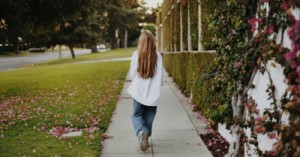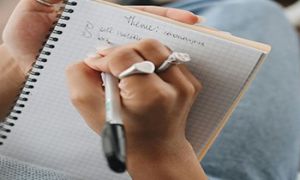Working barefoot is beneficial for educators in early childhood settings. It is comfortable and relaxing, which can contribute to a positive and calm atmosphere. The following article provides information on Benefits for Educators, Strategies For Educators, Implementing Barefoot Policies, Tips for Implementing Barefoot Practices for Educators, and more.
Benefits for Educators
- Enhanced Sensory Awareness
-
Connection to Environment: Being barefoot increases tactile feedback from the ground, enhancing your connection to the environment. This heightened sensory awareness can make you more mindful and present in your interactions with children.
-
- Improved Posture and Foot Health
-
Natural Movement: Barefoot walking encourages natural foot alignment and strengthens the muscles in your feet and legs. This can lead to improved posture and reduced risk of foot problems such as flat feet and bunions.
-
Joint Health: Reduced reliance on shoes with artificial support can help improve joint health and overall mobility.
-
-
Comfort and Relaxation
-
Stress Reduction: Many people find being barefoot more comfortable and relaxing. This increased comfort can help reduce stress and create a more positive and calm classroom atmosphere.
-
Mindfulness: Barefoot practices can promote mindfulness and relaxation, helping educators to feel more grounded and focused.
-
-
Modeling Healthy Habits
-
Leading by Example: By going barefoot, educators can model healthy habits and natural movement for children, encouraging them to explore and engage with their environment in a similar way.
-
Promotion of Wellbeing: Demonstrating the benefits of barefoot learning can help promote overall physical and emotional wellbeing for both children and educators.
-
Strategies For Educators
-
Leading by Example
-
Comfortable Environment: Create a comfortable environment where educators feel confident and comfortable being barefoot. Provide alternatives like indoor shoes or slippers for those who prefer not to go barefoot.
-
Modeling Behavior: Educators can model healthy barefoot practices by participating in barefoot activities with the children. This demonstrates the benefits and normalizes barefoot learning.
2. Health and Safety Protocols
-
Regular Checks: Conduct regular checks of both indoor and outdoor barefoot areas to ensure they are clean and safe.
-
Hygiene Practices: Encourage good hygiene practices, such as washing feet before and after activities, to prevent the spread of germs.
-
First Aid: Ensure that first aid supplies are readily available and that staff members are trained to handle minor injuries.
-
Designated Barefoot Zones: Clearly mark areas where barefoot activities are encouraged. Ensure these zones are safe and clean.
3. Communication with Parents
-
Information Sessions: Hold information sessions or provide written materials to inform parents about the benefits of barefoot learning and address any concerns.
-
Consent Forms: Obtain consent from parents for their children to participate in barefoot activities. Address any specific health or safety concerns parents might have.
-
Parental Involvement: Involve parents in barefoot activities by organizing family barefoot days or events where they can participate and observe the benefits firsthand
4. Professional Development
-
Training Workshops: Offer professional development workshops on the benefits and implementation of barefoot learning. This can help educators feel more comfortable and knowledgeable about the practice.
-
Collaboration: Encourage educators to share their experiences and strategies for barefoot learning with each other, fostering a collaborative and supportive environment.
-
By creating a barefoot-friendly environment, engaging in sensory-rich activities, and maintaining open communication with parents and staff, you can successfully implement barefoot practices in your early childhood education setting. This approach can enhance children's sensory experiences, physical development, and connection to their environment, while also supporting the well-being of educators.
Implementing Barefoot Policies
-
Health and Safety:
-
Ensure the environment is safe and clean. Regularly check for hazards like sharp objects or slippery surfaces.
-
Encourage good hygiene practices, such as washing feet before and after being barefoot.
-
-
Comfort and Consent:
-
Participation should be voluntary. Educators who prefer to wear shoes should feel comfortable doing so.
-
-
Professionalism:
-
Maintain a balance between comfort and professionalism. Consider providing indoor shoes or slippers as an alternative.
-
-
Communication:
-
Communicate the benefits and policies to parents and staff. Address any concerns they may have and provide reassurance about health and safety measures.
-
Tips for Implementing Barefoot Practices for Educators
1. Create a Comfortable Environment
-
Soft Flooring: Use mats, rugs, or carpets in areas where you plan to be barefoot. This provides cushioning and comfort while reducing the risk of injury.
-
Cleanliness: Maintain a clean and hygienic environment by regularly cleaning floors and barefoot areas.
2. Gradual Transition
-
Ease Into It: Start by being barefoot for short periods and gradually increase the time as your feet adjust. This can help prevent discomfort and allow your muscles to adapt.
-
Choose Soft Surfaces: Begin on soft, comfortable surfaces like mats or rugs to make the transition easier.
3. Health and Safety Practices
-
Hygiene Stations: Set up foot washing stations where you can clean your feet before and after barefoot activities. This helps maintain hygiene and prevents the spread of germs.
-
Regular Inspections: Conduct regular inspections of barefoot areas to ensure they are free from hazards such as sharp objects or spills.
4. Professional Development
-
Training Workshops: Participate in workshops and training sessions on the benefits of barefoot learning. This can provide valuable insights and boost your confidence in implementing barefoot practices.
-
Stay Informed: Keep up-to-date with research and best practices in barefoot learning to ensure you're providing the best experience for yourself and the children.
5. Foster a Positive Barefoot Culture
-
Lead by Example: Model barefoot practices by participating in barefoot activities alongside the children. This demonstrates your commitment and helps normalize the practice.
-
Encourage Participation: Create an environment where both children and educators feel comfortable being barefoot. Offer positive reinforcement and celebrate milestones.
6. Communication with Parents and Staff
-
Informational Materials: Provide parents and staff with information about the benefits of barefoot learning and address any concerns they may have.
-
Consent and Comfort: Ensure that participation in barefoot practices is voluntary. Respect individual preferences and provide alternatives like indoor shoes or slippers for those who prefer not to go barefoot.
7. Incorporate Mindfulness and Relaxation
-
Barefoot Yoga and Meditation: Introduce barefoot yoga or meditation sessions to promote relaxation, balance, and mindfulness. This can benefit both educators and children.
-
Calm Spaces: Create calm, barefoot-friendly spaces where you can relax and engage in quiet activities.
By integrating these practices and creating a supportive environment, educators can reap the benefits of barefoot learning, improving their own well-being while modeling healthy habits for children.
Further Reading
Children Going Barefoot In An Early Childhood Setting
Benefits For Children From Being Barefoot







 As an Educator in Australia, your pay rate falls under the Children’s Services Award 2010. This award states the minimum amount that an employer can
As an Educator in Australia, your pay rate falls under the Children’s Services Award 2010. This award states the minimum amount that an employer can When working as a qualified Early Childhood Teacher (with a university degree) within a service, your rate of pay will come from the Educational Services
When working as a qualified Early Childhood Teacher (with a university degree) within a service, your rate of pay will come from the Educational Services When working as a Diploma Qualified Educator your pay rate is from the Children's Services Award 2010. This Award states your minimum rate of pay
When working as a Diploma Qualified Educator your pay rate is from the Children's Services Award 2010. This Award states your minimum rate of pay When working as a Cert 3 Qualified Educator, your pay rate is from the Children's Services Award 2010. This Award states your minimum rate of
When working as a Cert 3 Qualified Educator, your pay rate is from the Children's Services Award 2010. This Award states your minimum rate of Educational Leaders play a crucial role in their early childhood service by ensuring that the educational program aligns with best practices and supports the holistic
Educational Leaders play a crucial role in their early childhood service by ensuring that the educational program aligns with best practices and supports the holistic In early childhood education and care, ratios are more than a technicality—they are a frontline safeguard. Every child deserves responsive supervision, emotional connection, and developmental
In early childhood education and care, ratios are more than a technicality—they are a frontline safeguard. Every child deserves responsive supervision, emotional connection, and developmental With the new national child safety reforms kicking in on 1 September 2025, early childhood services like yours have a real opportunity to lead the
With the new national child safety reforms kicking in on 1 September 2025, early childhood services like yours have a real opportunity to lead the Here’s a comprehensive Mobile Phone and Smart Watch Policy tailored for early childhood education and care (ECEC) services in Australia, aligned with the latest 2025
Here’s a comprehensive Mobile Phone and Smart Watch Policy tailored for early childhood education and care (ECEC) services in Australia, aligned with the latest 2025 The Sea of Fish Challenge is a national initiative that invites children, educators, families, and communities to create and display fish artworks as a symbol
The Sea of Fish Challenge is a national initiative that invites children, educators, families, and communities to create and display fish artworks as a symbol Across the early childhood education and care sector, educators are sounding the alarm: current staffing ratios are insufficient to deliver safe, meaningful, and developmentally appropriate
Across the early childhood education and care sector, educators are sounding the alarm: current staffing ratios are insufficient to deliver safe, meaningful, and developmentally appropriate


